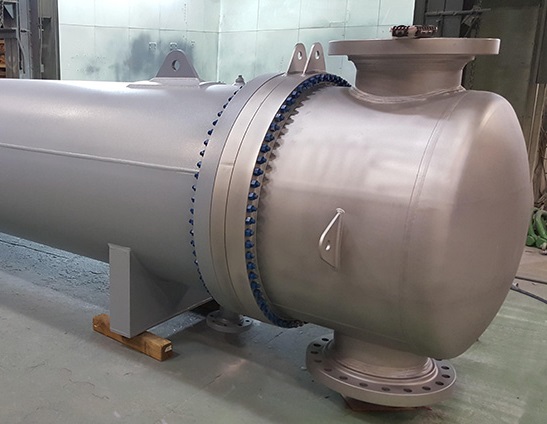Why use hairpin heat exchanger
Why use hairpin heat exchanger?
Hairpin heat exchanger designs can increase heat transfer coefficients in single-pass process streams with high temperature differentials.
Hairpin Heat Exchangers Advantages:
- Operates in true counter current flow permitting extreme temperature cross.
- Economically adaptable to service differentials.
- Ideal for wide temperature ranges and differentials.
- Standard double pipe or multi-tube design reduces engineering, thermal design, drafting and shop fabrication costs.
- Provides shorter deliveries than shell and tube due to standardization of design and construction.
- Resistance welded longitudinal fintubes utilized for high heat transfer efficiency.
- Available in a wide range of sizes to meet most process requirements.
- Multiple sections shipped completely assembled and ready for process piping connection.
- Can custom engineer equipment to meet any process or piping requirement.
- All hairpin heat exchangers are A.S.M.E. inspected and Code stamped.
Hairpin heat exchanger designs can increase heat transfer coefficients in single-pass process streams with high temperature differentials.
Sometimes referred to as G-fin tube, double-pipe or multitube heat exchangers, the hairpin heat exchanger has been used in process industries for many years. A hairpin heat exchanger can be described as a single-pass shell-and-tube unit that has been folded in half to give it a hairpin appearance. What distinguishes a hairpin exchanger from a traditional shell-and-tube exchanger are its closures. Hairpin heat exchanger closures allow for a removable tube bundle and accommodate thermal expansion without requiring expansion or packed joints.
Design Hairpin Heat Exchangers:
Thermal design of hairpin exchanger is done & guaranteed by Vendor most of the time. The reason is, hairpin exchanger is considered as modular equipment i.e. vendor selects the equipment to match their standard size. Hairpin exchanger can be very well designed using HTRI Software but vendor prefers to do it in their own software and most of the time vendor does not provide any detailed thermal calculation. As far as Mechanical design is concerned, most components (shell, head, flange, nozzles, split ring, tubes, baffles, tie rods etc.) of hairpin exchanger can be designed using ASME Sec. VIII and TEMA (partly). Special vendors prefer to use excel spread sheet for the calculation purpose instead of commercial software.
 Hairpin Heat Exchangers Material:
Hairpin Heat Exchangers Material:
Hairpin exchangers can be manufactured from all possible materials. The limiting factor may be fabrication of cast return bend closure. Due to its odd shape for exotic material it may have to be fabricated from plate.
Hairpin Heat Exchangers Range:
Hairpin exchangers are available in nominal shell size of 2" to 30". Hairpin Exchangers are used for temperature range of -200 ºC to +700 ºC and up to pressure of 350 bars. It can withstand pressure up to 680 bars with special designs. Based on the service, the unit is available with bare tubes, finned tubes and Twisted tubes construction.

